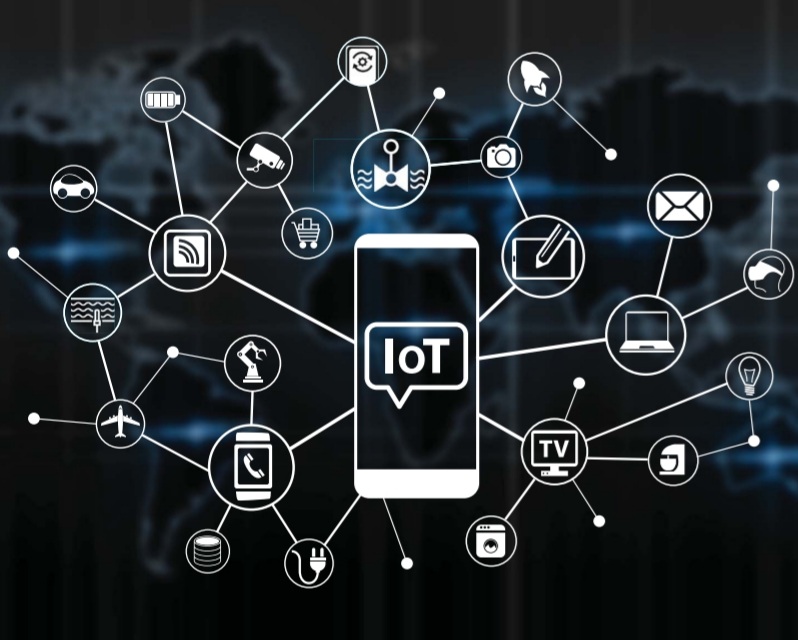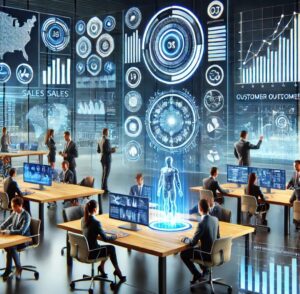
Before computers and Internet were even around, I have provided information technology sales and marketing services to businesses and consumers. I still maintain a team of knowledge and information in IT and my experiences selling Technology. I am as much part 9f the Information Technology world as I am in the sales and marketing world.
From list building and acquisition to inbound and outbound lead generation to planning, developing, managing sales and marketing efforts, I have worked on hundreds of marketing campaigns for most major business development advancement over the last 30 years. I go deeper than learning the latest technology buzzwords. I understand that knowing technology is more than just memorizing a handful of tech acronyms.
For me as a sales and marketing professional to be successful, and with the teams executing with, committing to understanding the technology and its business applications is critical.
To be successful with the sales csll I must get required background information for the sales call. The technology in this article is Internet of Things.
What Is The Internet of Things?
What is The Internet of Things? Look at it this way. People can connect to digital networks and the Internet with devices such as smartphones and computers. The Internet of Things enables us to connect ‘things’ to the Internet. By doing this, it shares information to chat and buy. Pretty cool!
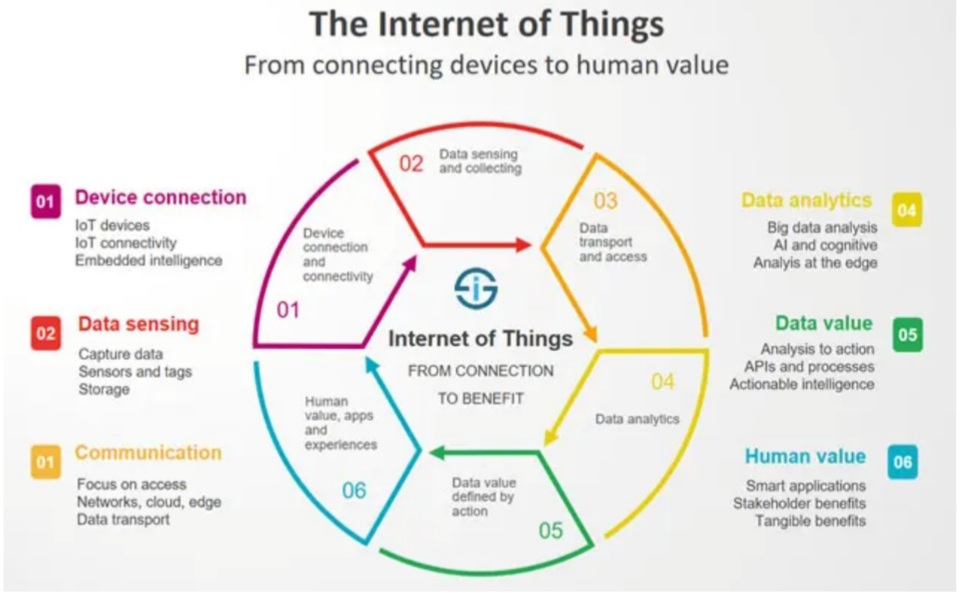
The internetworking of physical devices, also referred to as “connected devices” or “smart devices”, buildings and other items, embedded with electronics, software, sensors,actuators, and network connectivity that enable these objects to collect and exchange data.
The Global Standards initiative on Internet of Things (IoT-GS) defines IoT as ” the infrastructure of the information society”
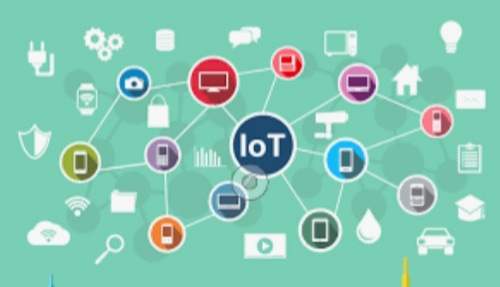
The Internet of Things (IoT) is changing how we live, work, travel, and do business. It is even the basis of a new industrial transformation, known as Industry 4.0, and key in the digital transformation of organizations, cities, and society overall. Reason enough to understand the essence of the Internet of Things.
The Internet of things (IoT) allows objects to be sensed and/or controlled remotely across an existing network, infrastructure, creating more opportunities for more direct integration of the physical world into computer-based systems, and resulting in improved efficiency, accuracy, and economic benefit.
When I o T is augmented with sensors and actuators, the technology becomes cyber-physical systems. This encompasses technologies such as intelligent transportation, smart grids, smart homes, and smart cities.
Each thing is uniquely identifiable through its embedded computing system. It is able to inter-operate within the the existing internet infrastructure.
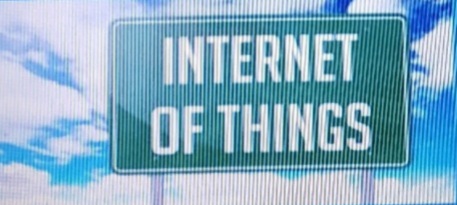
How The Internet of Things Works?
YouTube
YouTube
Youtube
Why is IoT Important To IT Marketing

Businesses will be the top adopter of I o T solutions. They see these ways the I o T can improve their bottom line.
- Lowering operating costs
- Increasing productivity
- Expanding to new markets or developing new product offerings.
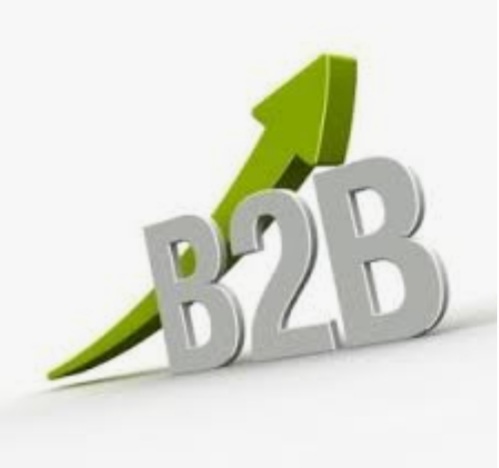
Predictions
- There are these core sectors of the I o T: Enterprise, Home, and Government, with the Enterprise Internet of Things (EIoT) being the largest of the three. By 2019, the EIoT sector is estimated to nearly account for nearly 40% of 9.1 billion devices.
- Gartner: Accurately stating that by 2020, there were 20.8 billion devices on the internet of things.
- ABI Research: was correct stating that by 2020, there were 30 billion devices wirelessly connected to the internet of things.
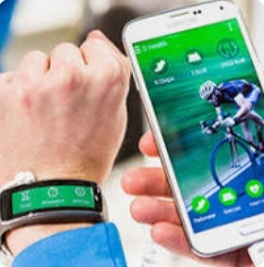
- Pew Research Internet Project: 83% of tech experts and engaged internet users, a large majority of the tech experts and engaged internet users who responded–83 percent–agreed with the notion that the Internet/Cloud of Things, embedded and wearable computing {and the corresponding dynamic systems} will have widespread and beneficial effects by 2025.
- The growth by implementing IIoT (Industrial Intrnet of Things) will generate $12 trillion of global GDP. (The gross domesticproduct (GDP) is one of the primary is used to gauge the health of a country’s economy. It represents the total dollar value of all goods produced over a specific time period.)
- The internet of objects would encode 50 to 100 trillion objects, and be able to follow the movement of thise objects. Human beings in surveyed urban environments will be surrounded by 1000 to 5000 trackable objects.
- According to the CEO of CISCO the commercial opportunity for “connected products ranging from cars to household goods” is expected to be a $USD 19 trillion.
TO KEY COMPONENTS TO DISCUSS
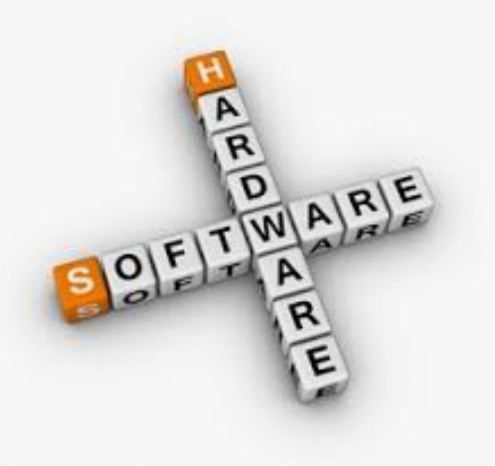
Hardware:
The electronics (sensors) that connect to the network (internet). It selects and sends back data, that use various actions and intelligence. Zed boards is an example of a circuit board that sends the information and sensors that collect measurements and monitor temps, flow, movement, level/position GPS, optical, and more!
Storage for the Data and Software – Cloud
Software:
The commands that instruct the electronics on the parameters on the data sent and collected, the analytics that can manipulate data to make informative actions.
Data Warehousing, is an example application that provides cognitive, predictive analytics, end point security, and asset management.
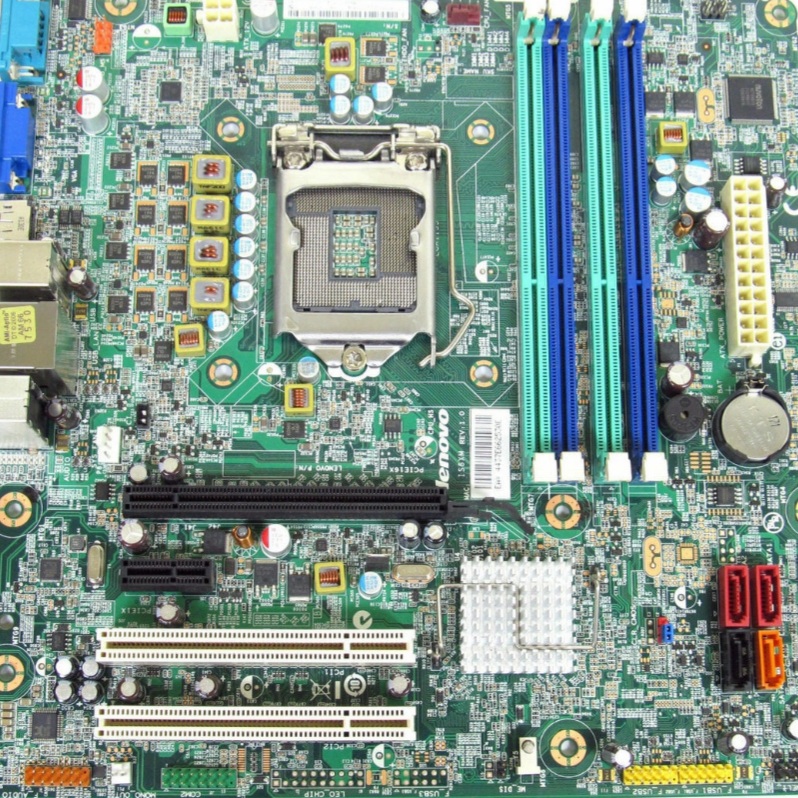
The Internet of Things Consists of more than 50 billion objects
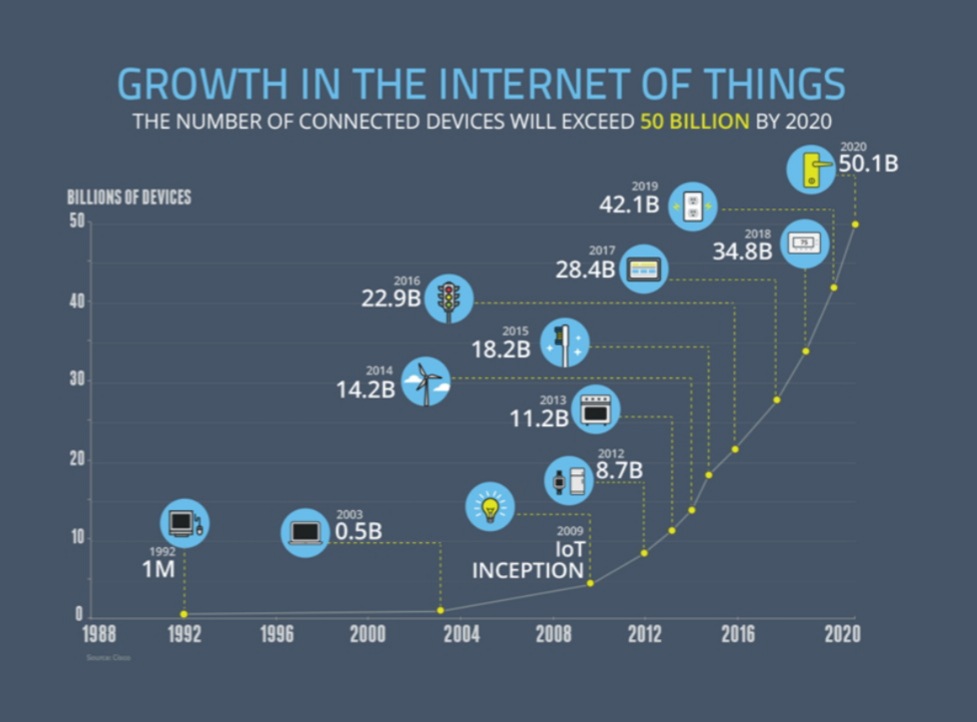
Communication / Protocol Enabling Technologies
Main types of technologies that enable IoT
- Mesh (ex. Zombie, Z Wave, etc.)
- Cellular (ex: 3G / 4G / 5G, Sigtax, etc.)
- Internal Networks (ex: WiFi, Ethereal, etc.)
- RFID and near-field communication – In the 2000’s, RFID was the dominant technology. Later, NFC became dominate (NFC). Yhe latest iPhone Android & supports NFC for pay.
- Optical Tags and Quick Response Codes – This is used for low cost tagging. Phone cameras decode QR code using image-processing technologies. In reality QR advertisement campaigns give less turn-out as users need to have another application to read QR codes.
- Bluetooth low energy – This is one of the latest tech. All new releasing smart-phones have BLE hardware in them. Tags based on BLE can signal their presence at a power budget that enables them to operate up to one year on a lithium coun cell battery.
Other Markets
Governments
Focused on increasing productivity, decreasing costs, and improving their citizens’ quality of life. I forecast that they will be the second-largest adopters of IoT ecosystems.
Consumers
Will log behind businesses and governments in IoT adoptions. Still, they will purchase a massive number of devices and invest a significant amount of money in IoT.
Industries
- Manufacturing
- Media, Advertising and Marketing
- Sub Sea / Maritime
- Infrastructure
- Energy
- Consumer
- Transportation
- Retail
- Defense
- Logistics
- Medical and Healthcare
- Agriculture
- Building and Home
- Environmental

Six Points of IoT
- Connectivity
- Security
- Data storage
- System integration
- Device hardware
- Application development
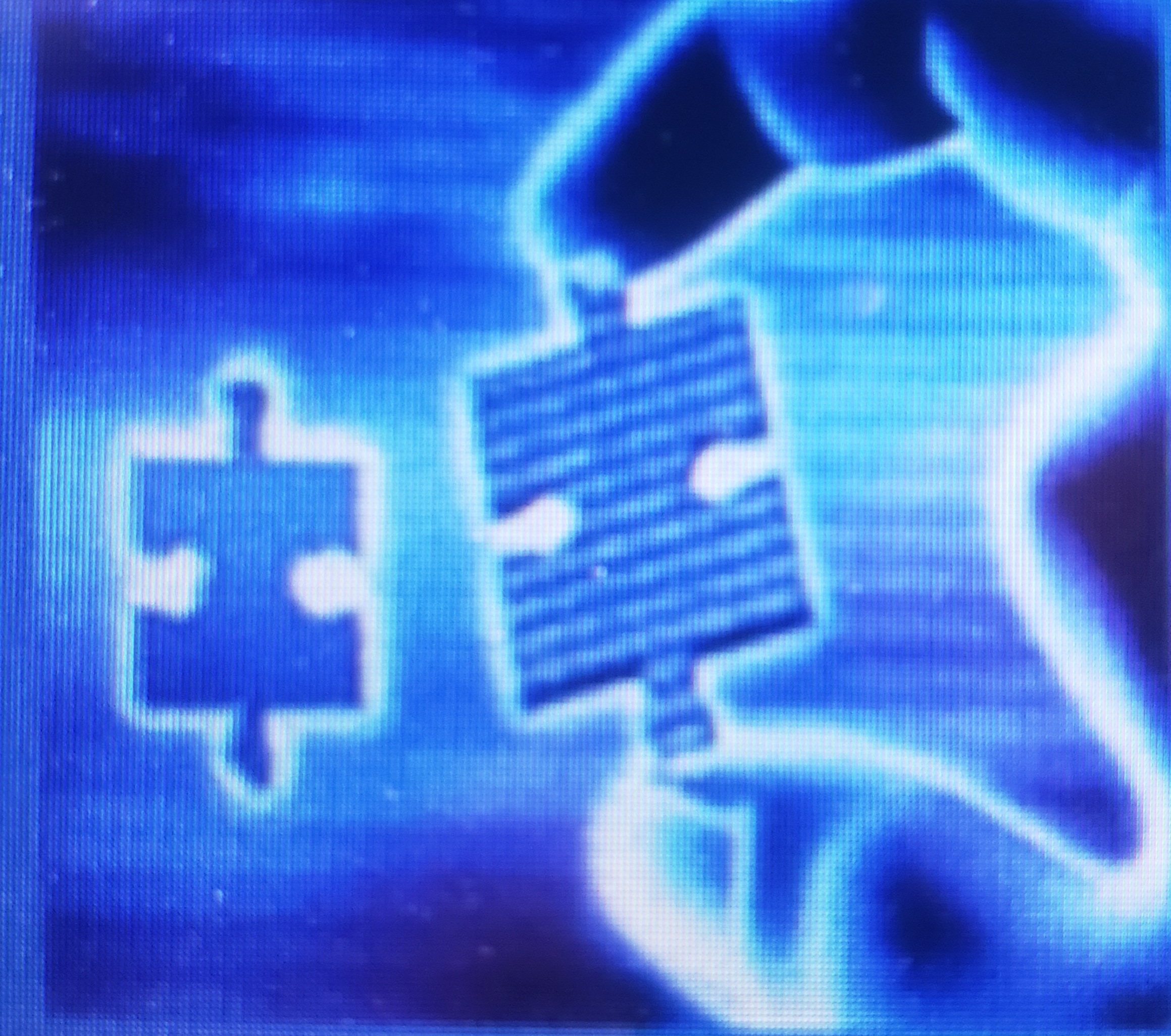
Industry Application Examples:
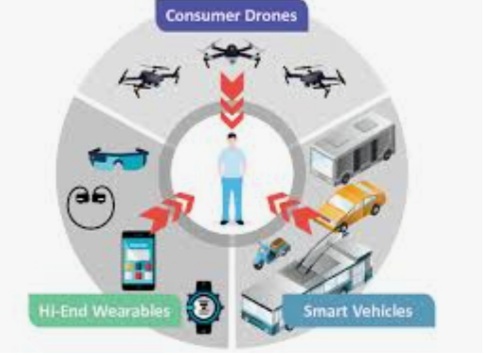
Consumers benefit personally and professionally from the optimization and data analysis of IoT. IoT technology behaves like a team of personal assistants, advisors, and security. It enhances the way we live, work, and play.
- Connected vehicles, entertainment, residences and smart homes, wearable technologies, quantified self, connected health, and smart retail appliances with remote monitoring capabilities.
- Consumer IoT provides new opportunities for user experiences and interfaces.
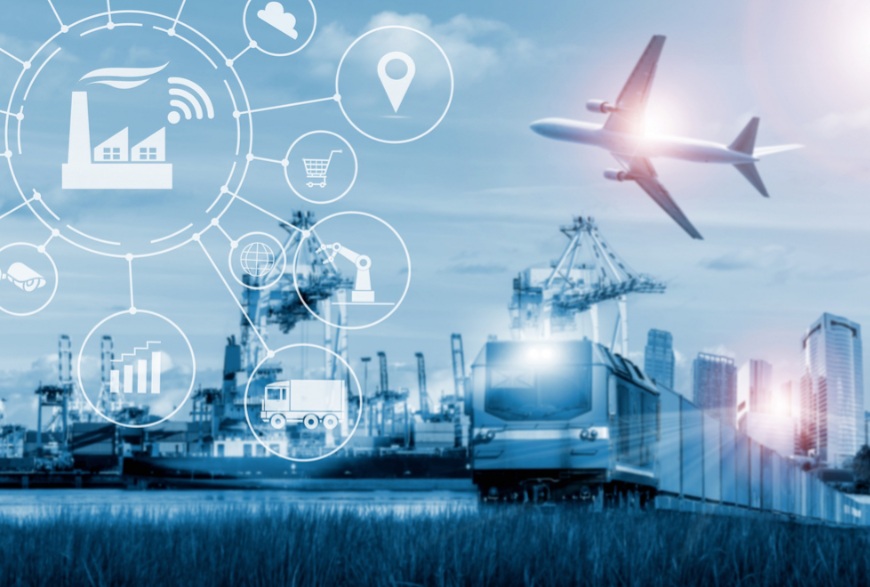
- Integration of communications, control, and information processing across various transportation systems.
- Applications of the IoT extends to all aspects of transportation systems (i.e. the vehicle, the infrastructure, and the driver)
- Dynamic interaction between these components of a transport system enables interand intra vehicular communication, smart traffic control, smart parking, electronic toll collection systems, logistics and fleet management, vehicle control, and safety and road assistance.
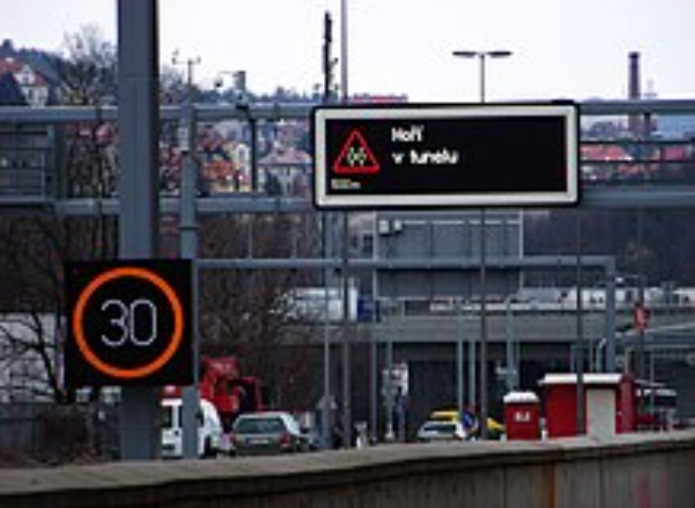
Digital variable speed-limit sign
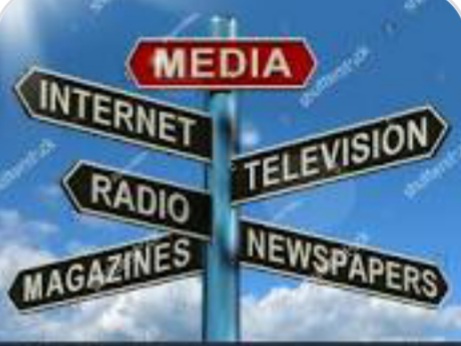
- Big data is collected: structured and unstructured, now can be analyzed to provide personalized engagement and more.
- Use of IoT apications can push engagement through multiple devices in real time.
- The wealth of data generated by this industry (i.e. big data) will allow practitioners in media and advertising to gain an elaborate layer on the present targeting used by the industry.
➢ Medical and Healthcare applications

- The Internet of Medical Things (IoMT) devices can be used to enable remote health monitoring and emergency.
- These health monitoring devices can range from blood pressure and heart rate monitors to advanced devices capable of monitoring specialized implants, such as pacemakers, wearable technologies or advanced hearing aids.
- Specialized sensors can also be equipped within living spaces to monitor the health and general well-being of senior citizens, while ensuring that proper treatment is being administered and assisting people regain lost mobility via therapy as well.
Other consumer devices to encourage healthy living such as connected scales or wearable heart monitors are also a possibility with the IoT.
Devices that help manage health vitals and reccurring medication requirements – that can be remotely monitored by medical professionals and digital adjustment mode.
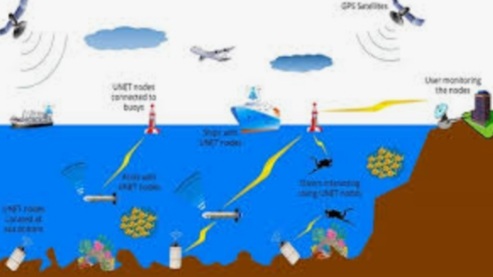
- The underwater extension of the Internet of Things, is a network of small wireless sensors that’ when embedded into underwater objects, allows them to intercommunicate via the cloud.
- Applications extend into aquatic sports, environmental monitoring and commercial activities. E.g. Ocean of Things project is a DARPA-led program designed to establish an Internet of things across large ocean areas for the purposes of collecting, monitoring, and analyzing environmental and vessel activity data. The project entails the deployment of about 50,000 floats that house a passive sensor suite that autonomously detect and track military and commercial vessels as part of a cloud-based network.
- The use of global internet data networks such as Sigfox, combined with long-life batteries, and microelectronics allows the engine rooms, bilge, and batteries to be constantly monitored and reported to a connected Android & Apple applications.
➢Metro Scale Deployment applications

There are several planned or on-going large-scale deployments of the IoT, to enable better management of cities.
- New York City Waterway’s connects all their vessels and be able to monitor them live 24/7. With the wireless network in place, NY Waterway is able to take control of the fleet and passengers in a way that was not previously possible. New applications can include security, energy, and fleet management, digital signage, public WI-FI, paperless ticketing, and others.
- Santander, Spain-two approaches have been adopted. This city of 180,000 inhabitants has already seen 18,000 application downloads of their smartphones. This application is connected to 10,000 sensors that able parking search, environmental monitoring, digital city agenda among others.City context information is used in this deployment as to benefit merchants through a spark deals mechanism based on city behavior that aims at maximizing impac of each notification.

- Monitoring and controlling operations of urban and rural infrastructures like bridges, railway tracks on- and offshore- wind-farms is a key application of the IoT.
- The IoT infrastructure can be used for monitoring any events or changes in structural conditions that can compromise safety and increase risk.
- It can slao be used to control critical infrastructure like bridges to provide access to ships.
- IoT devices can also be used for scheduling repair and maintenance activities in an efficient manner by coordinating tasks between different service providers and users of these facilities.
Uses of IoT devices for monitoring or operating infrastructure will improve incident management and emergency response coordination, and quality of service, up-times, and reduce costs of operation in all infrastructure related areas.
➢ Energy Management applications
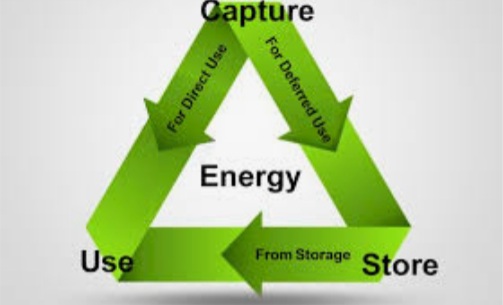
- Integration of sensing and actuation systems, connected to the internet, IoT devices will be integrated into all forms of energy consuming devices, such as bulbs, televisions, switches, power outlets, etc. and be able to communicate with the utility supply company in order to effectively balance power generation and energy usage.
- Such devices would also offer the opportunity for users to remotely control their devices, or centrally manage them via cloud based interface, and enable advanced functions like scheduling (e.g. remotely powering on or off heating systems, controlling ovens, changing lighting conditions, etc.)
In fact, a few systems that allow remote control of electronic outlets are already available in the market e.g. Belkin’s WEMO, Ambery Remote Power Switch, Budderfly, Telkonet’s Ecoguard, Whiznets Inc.etc.
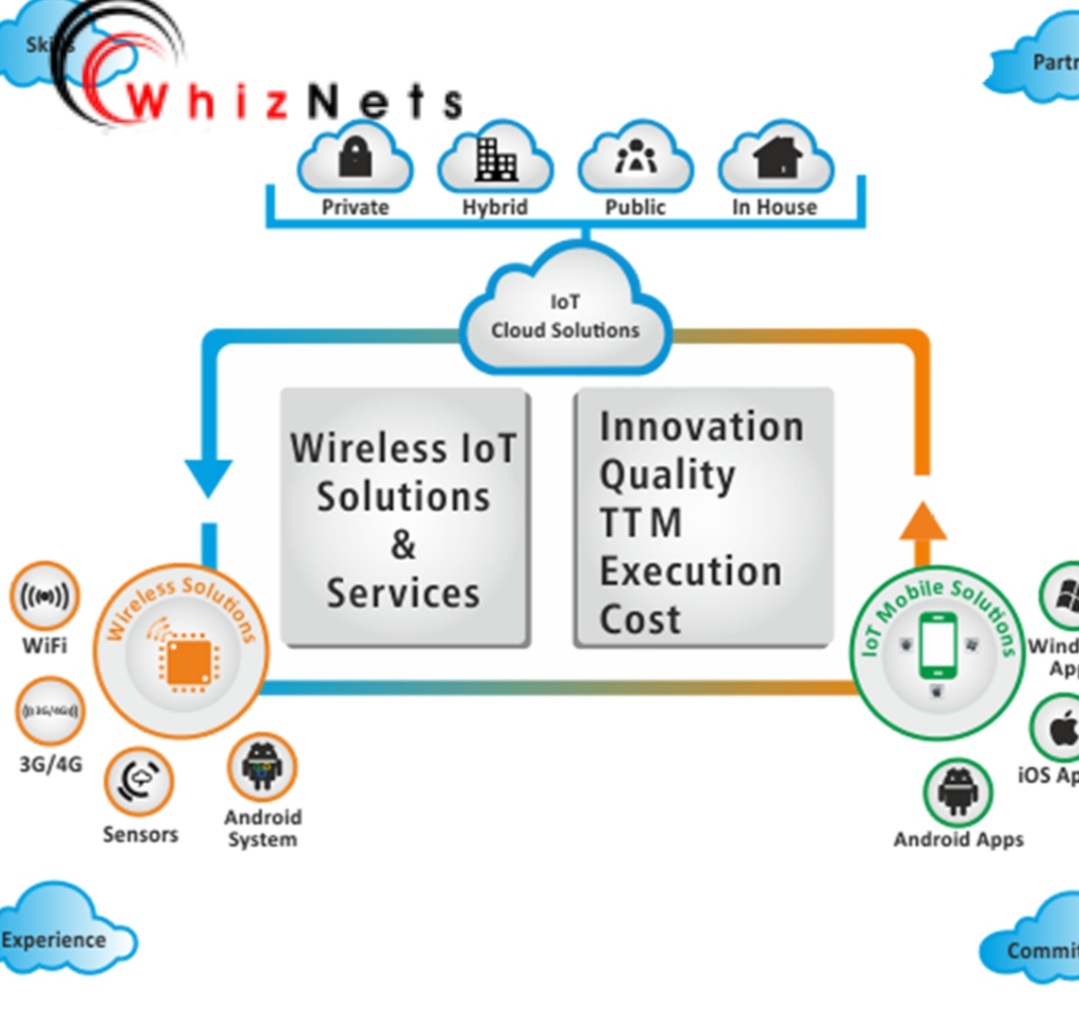 ➢ Manufacturing
➢ Manufacturing 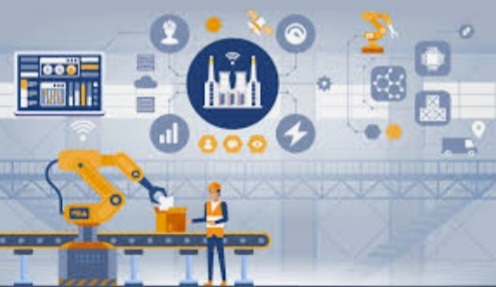
- Network control and management of manufacturing equipment, asset and situation management, or manufacturing process control, enabling rapid manufacturing of new products, dynamic response to product demands, and real-time optimization of manufacturing production and supply chain networks, by networking machinery, sensors and control systems together.
- Predictive maintenance is probably going to be the most popular IoT as it is applicable to existing assets and management systems.
- M2M IoT is machine to machine communication.
The objective of intelligent maintenance systems is to receive unexpected downtime and increase productivity.
➢ Building and home automation
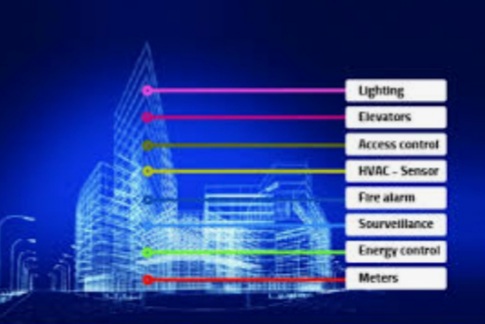
- IoT devices are a part of home automation, including lighting, heating and air conditioning, media and security systems and camera systems.
- Long-term benefits include energy savings
- Smart homes are based on platforms or hubs that control smart devices and appliances, such as Apple‘s HomeKit’s home products and accessories controlled by an application in iOS devices such as the Android iPhone and the Garmin, Apple Watch, Siri (e.g. Lenovo’s Smart Home ) utilizing Amazon Echo, Google Home, Apple’s HomePod, and Samsung’s SmartThings Hub and in addition commercial systems that are open source ecosystems; including Home Assistant, OpenHAB and Domoticz.
- IoT devices are used in various types of buildings (e.g., public and private, industrial, institutions, or residential) in home automation and building automation systems integrating the Internet with building energy management systems createling energy-efficient IOT-driven “smart buildings”.
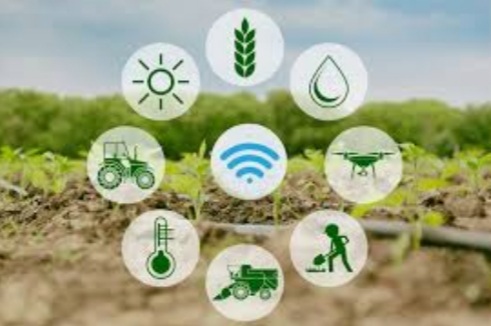
- IoT devices and sensors in farming collecti data on temperature, rainfall, humidity, wind speed, pest infestation, and soil content.
- Automate data “smart agriculture” improve quality and quantity, minimize risk, waste, and reduce the effort to manage crops. (e.g. soil temp., moisture from afar, and apply IoT-acquired data to precision fertilization programs).
- The goal achieves data from sensors increase farm productivity and reduce costs.
- In August 2018, Toyota Tsusho began a partnership with Microsoft to create fish farming tools using the Microsoft Azure application suite for IoT technologies related to water management using artificial intelligence to count the number of fish on a conveyor belt, analyze the number of fish, and deduce the effectiveness of water flow from the data the fish provide (e.g. The FarmBeats project)
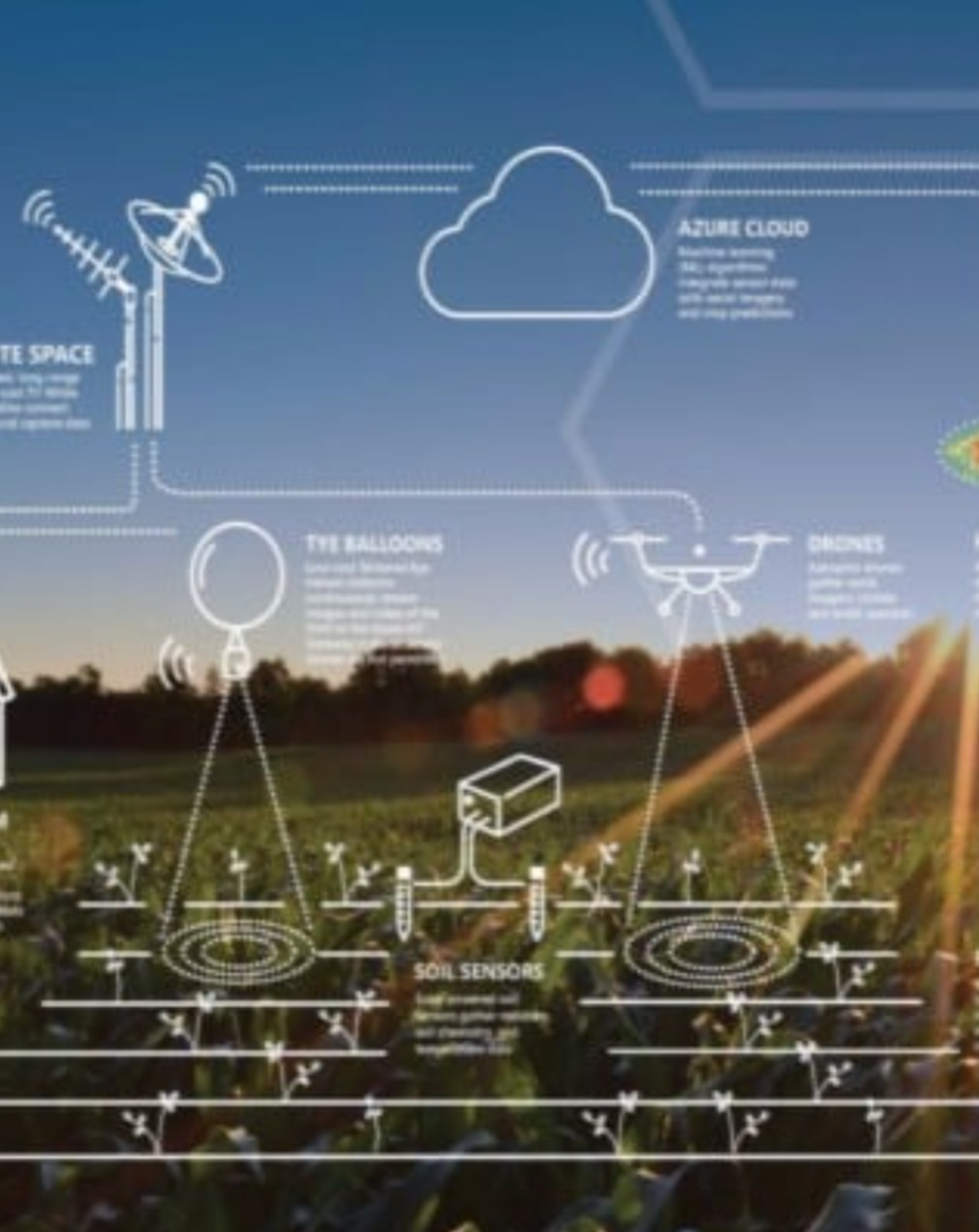
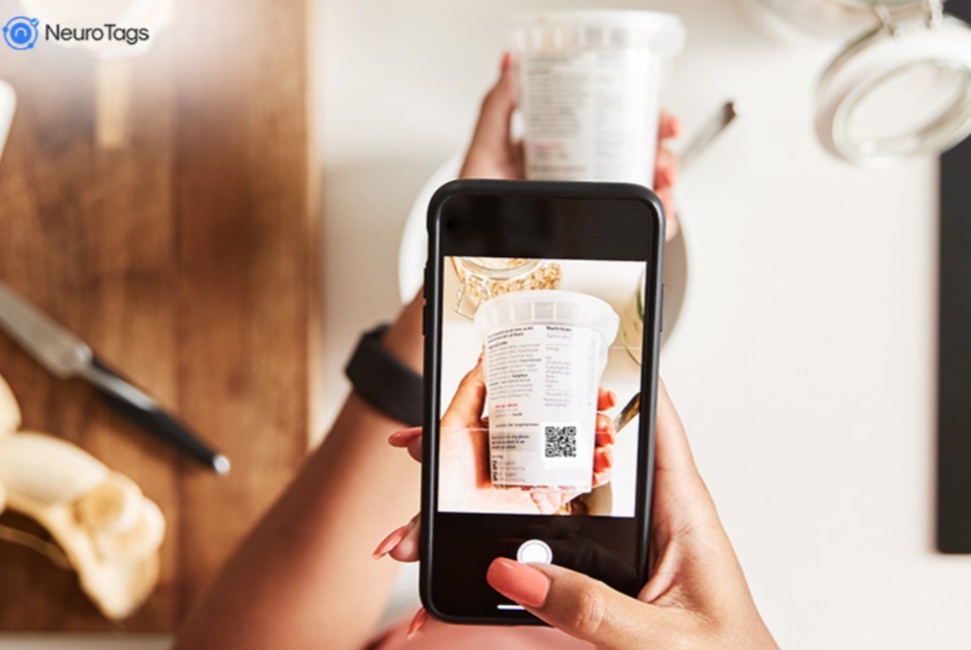 Product digitization means adding the digital capabilities to physical products so that product buyers can interact with the product getting information in digital format. It is achieved by putting scannable codes on the product or product packaging allowing buyers to scan the code using their smartphones and access the product information on their phone screen. Product digitization converts physical products into digital gateways to convey the right marketing message at the right moment.
Product digitization means adding the digital capabilities to physical products so that product buyers can interact with the product getting information in digital format. It is achieved by putting scannable codes on the product or product packaging allowing buyers to scan the code using their smartphones and access the product information on their phone screen. Product digitization converts physical products into digital gateways to convey the right marketing message at the right moment.
- Smart active packaging in which a QR code or NFC tag is affixed on a product packaging containing a unique identifier (typically a URL) enabling user access to digital content about the product via a smartphone.
- “Internet of Packaging” applications identifiy, automate supply chains, scanning large scale giving consumers access to digital content.
➢ Environmentalal monitoring applications

- Use sensors to assist in environmental protection by monitoring air or water quality, atmospheric or soil conditions, and can even include areas like monitoring the movements of wildlife and their habitats.
- Development of resource constrained devices connected to the internet also means that other applications like earthquake or tsunami early-warning systems can also be mobile.
- Standardization IoT brings to wireless sensing will revolutionize this area.
Top IoT Platforms
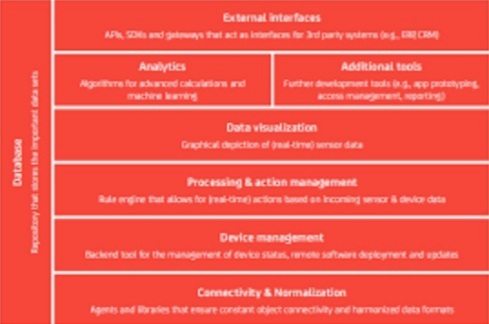
IoT platforms serve as a mediator between the world of physical objects and the world of actionable insights. Combining numerous tools and functionalities, Internet of Things platforms enable building unique hardware and software products for collecting, storing, analyzing and managing the plethora of data generated by connected devices and assets.
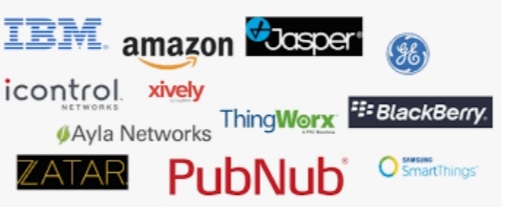
Companies That Have IoT Technologies
- GE (GE)
- Amazon (AMAZN)
- Texas Instruments (TXM)
- Google (GOOGLE)
- Garmin (GARMIN)
- IBM (IBM)
- Microsoft ( MSFT)
- Cisco (CSCO)
- Apple (AAPL)
- AT&T (T)
- Arm (ARMH)
- Bosch (BOSCHLTD)
- Siemens (SIEGY)
- Verizon (VZ)
- Oracle (ORCL)
- Intel (INTC)
- PTC (PTC)
- Interdidigital (IDCC)
- Nimble Storage (NMBL)
- Skyworks (SKWKS)
- Silicon Laboratories (SLAB)
- Red Hat (RHT)
- ARROW Electronics (ARW)
- Zebra Technologies (ZEBRA)
The Internet of Things Glossary of Terms to Know
After being in the Technology IT field for many years including Internet of Things, the term “Internet of Things” has grown exponentially.
Below are IoT Internet of Things terms.
The Complete IoT Glossary
5G: The fifth generation of mobile technologies designed for a future where many physical elements of the world are connected to the internet. It will be much faster than its predecessor (4G), and is projected to spur growth in the IoT industry especially.
Actuators: Components that are responsible for moving or controlling a mechanism or a system. They require a source of energy which can be an electric voltage or signal triggered by an electrical system. There are many types of actuators that can do things like control pumps, lights, motors, valves, and many other things.
Additive manufacturing: Another term for 3D printing. The process builds successive layers of a material into a three-dimensional item guided by a CAD model.
Artificial Intelligence (AI): A genre of computer science in which non-human machines demonstrate some form of intelligence. You can think of this as computers being able to take actions to achieve a goal based on their perceived environment.
AIoT: A term used to describe AI in conjunction with the IoT. This is often used when thinking about IoT in an analytics and data collection construct.
Anomaly detection: The identification of outliers or unexpected items or events in data sets. For example, when your bank sees suspicious activity on your account they are detecting an anomaly. It is identifiable because it is different that your previous spending activity. Machine learning algorithms are often trained to do this.
APIs (Application Programming Interfaces): Tools for building applications that perform commonly desired actions by using methods that already exist. For example, the Google Maps API allows anyone to embed high quality, digital maps on a webpage. You can think about these as building blocks that allow you to accomplish tasks without needing to build complex services from the ground up.
Automation: Simply put, this is the process of performing a procedure or action without human assistance. It’s often referred to in an industrial context via control systems for machinery or processes in factories, but also covers applications like setting your household thermostat to turn on at a certain time or when the temperature breaches a set threshold.
Big data: Deals with data sets that are too large or complex to be used with traditional data processing applications software. This field tries to extract information, analyze, or find meaning from these large data sets.
Bluetooth: Wireless technology standard that exchanges data between devices over short distances via radio waves.
Bluetooth Low Energy (BLE): Bluetooth technology that consumes less power than traditional Bluetooth but within a similar communication range.
Cloud computing: Also referred to colloquially as “the cloud”, this term describes computer software, systems, and services that run on the internet without direct management by a user, rather than on a computer. Systems in the cloud appear to be running on your computer, phone, or any other computing device but are actually running over the internet on a “cloud” of computers that are sharing services with each other.
Condition monitoring (CM): An aspect of predictive maintenance, condition monitoring refers to the process of monitoring an aspect of a machine to collect data that can indicate any significant changes that could lead to a breakdown or fault. The types of conditions monitored can vary from temperature, to vibration, to many other parameters.
Connected products: Also referred to as “smart” products, this term simply refers to any consumer item that has the capability to be connected to the internet.
Connectivity or Internet Connectivity: This refers to the means of connecting something to the internet. There are various methods including WiFi, Ethernet, etc. Choosing your method of connectivity is an important factor when setting up your IoT system.
Cyber-physical systems (CPS): Similar to IoT, these types of systems take objectives that are defined in the digital world to the physical world. They consist of 6 primary characteristics including processing, physical action, energy requirements, sensing, collaboration, and coordination.
Cybersecurity: Simply put, this term refers to any method used to maintain a safe online presence. It includes passwords, two-factor authentication, user permissions, etc.
Dashboard: In a software context, this term refers to any tool that can show a data set in a way that is simplified and easily interpreted by the user. Typically it shows charts, graphs, controls, and other data visualizations.
Data-driven decision management (DDDM): The process of collecting and analyzing relevant information to make business choices based on the insights gathered. This practice is used in almost every industry from manufacturing to government to retail.
Dead zones: Areas with little to no cellular or internet connectivity. For example, deep underground mining areas that have limited connectivity can be considered “dead zones”.
Deep learning: Deep learning uses learning algorithms called neural networks to process information. This enables computers to identify patterns in data and define relationships between complex systems of inputs and outputs, among other tasks. Can be supervised, semi-supervised, or unsupervised.
Digital transformation: The process of using technology to change or create new methods of doing tasks. No longer only a cultural shift, digital transformation is now mainly used in a business context to describe the ongoing change in the nature of work and running organizations.
Digital twin: A digital twin is a virtual model of physical assets, processes, systems, or devices that shows both the elements and the dynamics of how these things work. Digital twins can allow for planning for the future, data analysis, system monitoring and more.
Downtime: The length of time when a machine is out of commission or not available to be used. In the auto industry, downtime costs manufacturers, on average $22,000 a minute.
Edge computing: Edge computing consists of computing that occurs outside of the cloud in applications where real-time data is being monitored or collecte
Edge device: In an IoT context, this refers to the hardware that is controlling the flow of data between networks. For example, in the above architecture diagram, the edge device is a sensor which sends readings to a gateway device where it is analyzed and processed before it is sent to the cloud.
Embedded system: A controller that has its own dedicated function within a larger system that is entrenched inside a complete device. These systems are often based on microcontrollers.
Environmental monitoring: The process of collecting and analyzing data on the environment at both large and small scales. In an IoT context, this often involves placing sensors in particular areas to measure things like soil moisture or water quality.
Equipment monitoring: The process of collecting and analyzing data on a part of a machine or a piece of equipment. Often used for predictive maintenance and preventing downtime.
Fleet management: the care, control, operation, and handling of a group of commercial transportation vehicles such as trucks, planes, ships, and rail cars. In an IoT context, this often involves vehicle telematics for tracking and diagnostics. The overall purpose is to minimize risks, improve efficiency, and reduce costs.
Fog computing: Similar to edge computing, fog computing is concerned with leveraging the computing capabilities within a local nework to carry out computation tasks that would ordinarily have been carried out in the cloud.
Gateway device: a piece of hardware that acts as an access point between two networks. In an IoT context, this refers to the hardware device that connects edge devices such as sensors to the cloud.
Hardware agnostic: In an IoT context, this refers to software systems that do not require specific proprietary devices in order to be deployed. Many IoT software platforms are only compatible with hardware that they make specifically for their own systems. Platforms like Temboo’s Kosmos IoT system do not require users to use special hardware and work with many different types of devices without suffering compatibility issues.
IIoT (Industrial Internet of Things): Refers to the use of the Internet of Things in an industrial context. This includes IoT applications in manufacturing, energy management, supply chains, and more.
Industry 4.0 Industry 4.0 refers to the promise of connecting the digital and the physical worlds through smart factories. Thanks to the emergence of cyber-physical systems, the internet of things, and cloud computing, some experts believe we are on the brink of a fourth industrial revolution. All of these technologies fall under the umbrella of Industry 4.0, which refers to the recent trend towards automation and data exchange in manufacturing..
Interoperability: The ability of different systems and devices to seamlessly work together in a coordinated manner. This is a big challenge in IoT deployments but can be solved through hardware agnostic platforms like Temboo’s Kosmos System.
IoMT (Internet of Medical Things): Internet of Things applications used in medical treatment, devices, facilities, and more. For example, wearable medical devices that can track and monitor patient health are being adopted around the world and can be considered one of the more mainstream applications of IoMT.
IoT (Internet of Things): Any system with the ability to transfer data over a network without requiring human interaction. For example, industrial sensors that collect data on the machine vibration and send that data to the cloud are a part of the Internet of Things, as are smart watches that can monitor your heart rate during exercise and send that information to an app on your phone.
IoT platform: Multi-layer technology that enables the deployment, management, and automation of connected devices in an IoT system.
M2M (machine-to-machine communication): Direct communications between machines using any channel. Can include industrial instrumentation, signaling, telemetry, and more.
MAC address: Short for “media access control address”, this term refers to a unique identifier assigned to a device for communications within a network segment such as Ethernet, Wi-Fi, and Bluetooth.
Machine learning: Machine learning is a subset of AI in which machines can be trained to take data and ‘learn’ things about it for themselves rather than coding the machine to do a task. It’s about pattern recognition – machine learning technology can allow a system to make predictions based on the patterns and data it receives.
Mesh Networking: With mesh networking, all of the devices in the network can communicate with each other, rather than having to connect with one central hub. This makes the size and area of the network virtually unlimited, which is why it is so useful for industrial IoT operations like large connected sensor networks.
Microcontroller: Microcontrollers can be thought of as tiny computers that can be added to any physical object or space to give it a ‘brain’. They contain one or more computer processors, along with memory and programmable input/output peripherals – all in a single integrated circuit.
Modbus: Originally developed by Modicon in 1979, Modbus is an open, non-proprietary communications protocol that enables machines to communicate and coordinate with each other by passing information in a standardized way.
Neural network: A learning algorithm used to model complex relationships between inputs and outputs, to find patterns in data, or to capture the statistical structure in an unknown probability distribution between observed variables.
OTA (over the air) updates: OTA updates are a mechanism for remotely updating internet-connected hardware with new settings, software, and/or firmware. At this point in the evolution of IoT, it is well established that a robust OTA update mechanism is an essential component for any successful IoT system design.
PLC (Programmable Logic Controller): The ruggedized computers that have been at the heart of industrial automation applications since the 1970s. They’re used to automate industrial control systems that have strict requirements around real-time controls and fault tolerance and are a critical part of many types of automated physical systems.
Predictive maintenance (PdM): Utilized in the industrial world since the 1990s, this type of maintenance involves monitoring the performance of machines during normal operation to reduce the likelihood of failures. The data collected will help determine when a machine is operating outside of normal behavior, thus allowing maintenance to happen before it breaks down. This is one use case for machine learning in IoT.
Preventive Maintenance: Similar to predictive maintenance, the goal here is to reduce equipment failures. However, with preventive maintenance, maintenance is performed regularly on the machine to reduce the likelihood of failure rather than doing maintenance when the machine begins to exhibit abnormal behavior (see predictive maintenance above).
Redundancy: Adding backups to a system as a failsafe with the intention of increasing the reliability of it.
Remote monitoring and control (M&C): Systems designed to supervise and govern objects or facilities over a large distance with some degree of automation. For example, monitoring power grids over a wide area from a point outside of that area.
ROI (return on investment): The formula to calculate the amount of money saved or earned based on the cost of initial investment. This is a measure of performance to evaluate the efficiency of an investment.
Role-based access control (RBAC): The process of restricting system access to authorized users for security purposes. This also includes applications that allow users to have certain permissions relative to their roles as well as restrictions.
SCADA (Supervisory Control and Data Acquisition): A hardware and software system for monitoring and controlling a factory or industrial equipment.
SDGs (Sustainable Development Goals): In 2015, the United Nations established the 17 Sustainable Development Goals which make up a systematic global framework to end poverty and protect our planet by 2030. According to a recent study, 84% of IoT deployments are addressing the SDGs in some way. 70% of these deployments were driven by the private sector.
SDK (Software Development Kit): a collection of libraries, tools, documentation, processes, code samples, and/or more that allow users to create software applications on a given platform.
Sensors: Electronic components whose purpose is to detect events or changes in their physical environments and send that information via electrical signal to other electronics, usually a computer processor. There are countless types of sensors that can measure all sorts of things. For instance, sensors can convert light, motion, heat, moisture, or pressure into an actionable representation (e.g. a numerical value).
Skills gap: The difference between the skills that employers want or need and the skills their workforce offers. This is a big issue in the manufacturing industry in particular right now.
Smart buildings: Automation optimizes the processes that occur inside a building. (e.g. heating and cooling, security, lighting, ventilation, water usage,)
Smart cities: Cities that leverage digital technology and connectivity improve quality of life. The efficiency of operations and services increase economic prosperity for citizens while ensuring long-term economic, social, and environmental sustainability.
Smart home: Home automation or domotics is similar to smart buildings but applied to individual homes. It automates HVAC systems, security, doorbells, entertainment systems and more.
Sub-GHz: a type of wireless technology that allows data transmission using a frequency band under 1 GHz to distant hubs without using a lot of power. A great option for many IoT applications.
Upskilling: The process of teaching employees new skills to fill vacancies from the organization’s current workforce. It is especially relevant in the context of emerging technologies.
Wearables: Electronic devices that are designed to be worn by people. Can refer to fitness trackers, pacemakers, smart glasses, and more.


